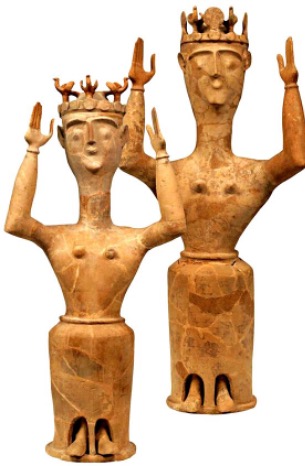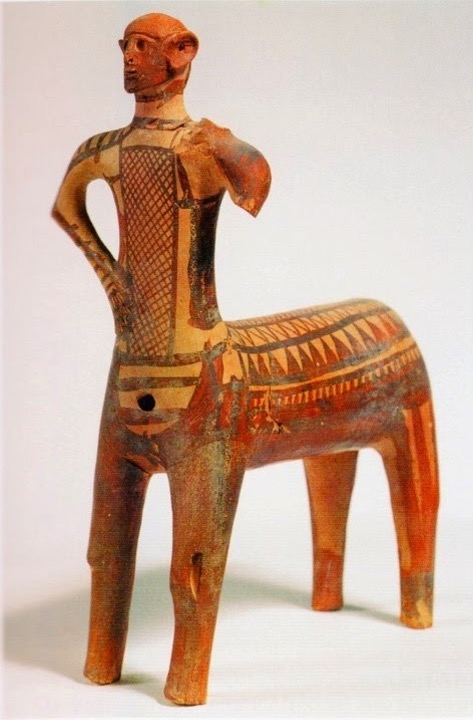EARLY IRON AGE/”DARK AGES” c. 1100–700 BCE
1/3
There's no tags or description
Looks like no tags are added yet.
Name | Mastery | Learn | Test | Matching | Spaced |
|---|
No study sessions yet.
4 Terms

Terracotta Goddess Votives
from Agia Irini, Kea
Dating to late Cycladic 1 period (1700–1500 BCE)
So technically LBA
They were found in “House A”, identified as a Bronze age shrine
One figurine was reused in an 8th c. context in the shrine, suggesting veneration of the past during the EIA

Subminoan Goddess figurines
from Late Minoan Sanctuary at Karphi, Crete
11th c. BCE
Subminoan=Submycenean but on Crete
Continuity of production of small-scale votive statuary on Crete, from refugee settlements and Minoan sanctuaries
Refugee settlements–lot of sites moved inland post collapse to offer more defense
Ex: Karphi, def a hike
Despite the movement, we do see some cultural continuity
Upraised arms
Wheel used for flat skirts

Lefkandi Centaur
one of earliest figural representations after the collapse of Mycenaean civilization, dates c. 950 BCE from tomb
Broken in antiquity
Signs of repair, head and body associated with different graves at Toumba cemetery
Wheel–thrown body, limbs, torso
Head modeled separately and attached (see: Phylakopi goddess)
Minimal features and modeling
H: 36 cm, L:26 cm
NOTE: Centaur is very GREEK, sphinxes are near eastern, centaur is very much a greek culture sort of thing
Possibly iliad and odyssey being formulated around this time
Sporadic evidence
Lefkandi (Euboea)
Euboea–large island off the coast (E) of Attica/Athens, very important in early iron age and geometric period
Important for trade and colonization starting in the 8th c. BCE
Key piece of info about continuing trade linked between Greece and the Near East in the 11th–10th BCE
Point of contention–have objects from near east does not mean that they were the ones doing the trade–perhaps the phoenicians were the result of trade
had a Heroon